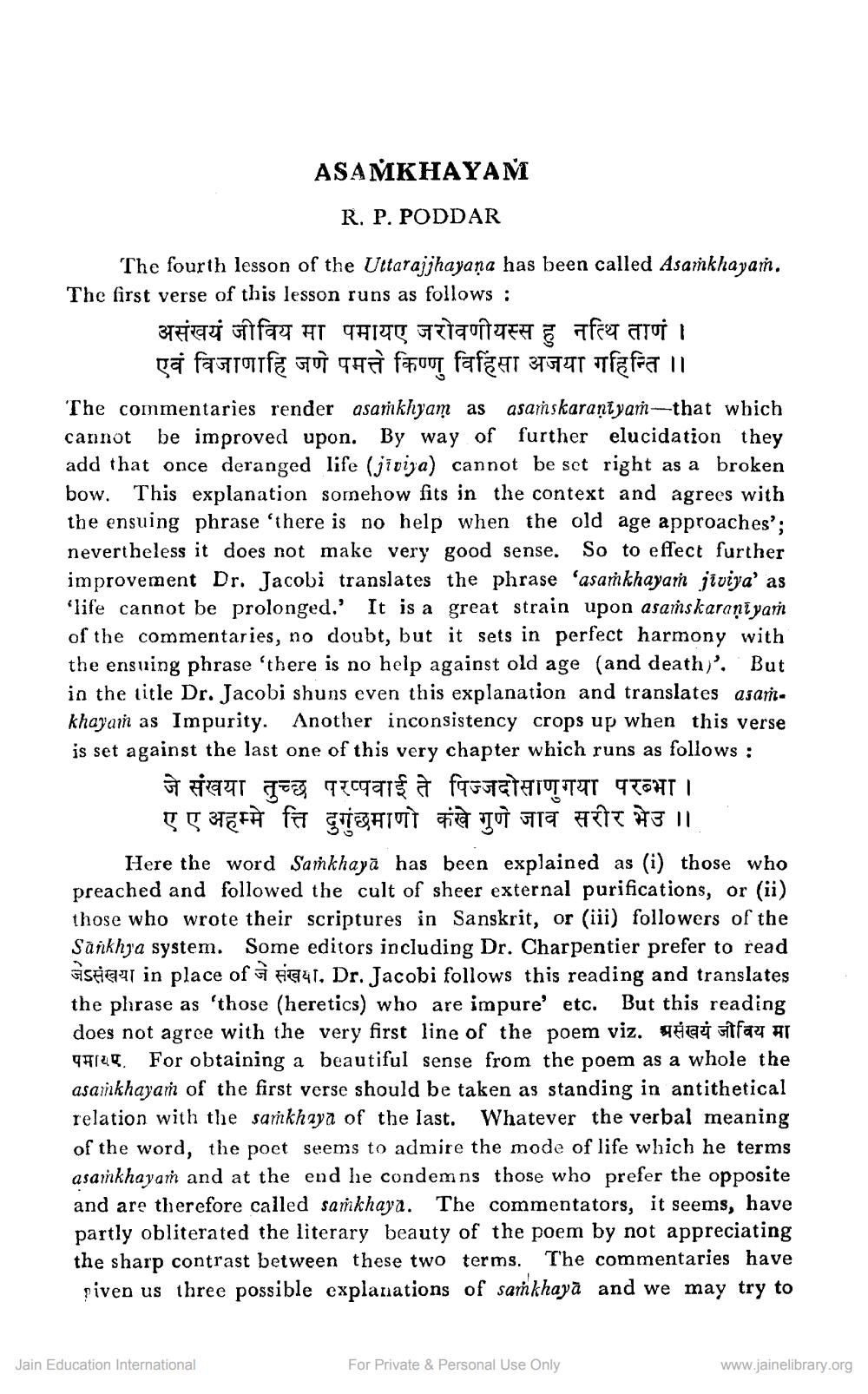________________
ASANKHAYAM
R. P. PODDAR
The fourth lesson of the Uttarajjhayaņa has been called Asamkhayam. The first verse of this lesson runs as follows :
असंखयं जीविय मा पमायए जरोवणीयस्स हु नत्थि ताणं ।
एवं विजाणाहि जणे पमत्ते किण्णु विहिंसा अजया गहिन्ति ।। The commentaries render asamkhyam as asaṁskaraniyam-that which cannot be improved upon. By way of further elucidation they add that once deranged life (jiviya) cannot be set right as a broken bow. This explanation somehow fits in the context and agrees with the ensuing phrase 'there is no help when the old age approaches'; nevertheless it does not make very good sense. So to effect further improvement Dr. Jacobi translates the phrase "asaṁkhayam jiviya' as life cannot be prolonged.' It is a great strain upon asaṁskaraṇīyam of the commentaries, no doubt, but it sets in perfect harmony with the ensuing phrase 'there is no help against old age (and death;'. But in the title Dr. Jacobi shuns even this explanation and translates asankhayan as Impurity. Another inconsistency crops up when this verse is set against the last one of this very chapter which runs as follows :
जे संखया तुच्छ परप्पवाई ते पिज्जदोसाणुगया परब्भा ।
ए ए अहम्मे त्ति दुगंछमाणो कंखे गुणे जाव सरीर भेउ ।। Here the word Samkhayā has been explained as (i) those who preached and followed the cult of sheer external purifications, or (ii) those who wrote their scriptures in Sanskrit, or (iii) followers of the Sankhya system. Some editors including Dr. Charpentier prefer to read Espear in place of GFC41. Dr. Jacobi follows this reading and translates the phrase as 'those (heretics) who are impure' etc. But this reading does not agree with the very first line of the poem viz. Hau itfay at 44128. For obtaining a beautiful sense from the poem as a whole the asainkhayan of the first verse should be taken as standing in antithetical relation with the samkhaya of the last. Whatever the verbal meaning of the word, the poct seems to admire the mode of life which he terms asamkhayam and at the end he condemns those who prefer the opposite and are therefore called samkhaya. The commentators, it seems, have partly obliterated the literary beauty of the poem by not appreciating the sharp contrast between these two terms. The commentaries have piven us three possible explanations of sarkhayā and we may try to
Jain Education International
For Private & Personal Use Only
www.jainelibrary.org




